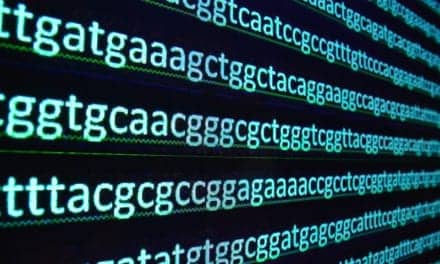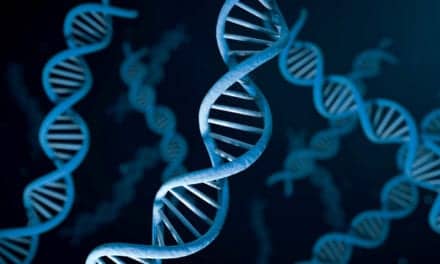Respondents show significant interest in developing NGS-based tests for infectious disease testing applications
By Divyaa Ravishankar
In recent years, the potential of next-generation sequencing (NGS) and related genomic technologies has generated many headlines, both for the advances they are making possible on the research front, and for their ongoing use in developing diagnostics and biopharmaceutical products in oncology and other early-adopting fields. There is no longer a question of if or when such genomic technologies will move from the research bench to the patient bedside—this shift is happening now. It is imperative that healthcare providers position themselves to integrate genomics and other “omics” information into standard care today, so that their patients don’t miss out tomorrow.
NGS technologies have created many new capabilities, and have opened the door to an increasing number of novel applications within the clinical space. The brisk evolution of sequencing technologies has brought to market a number of competing sequencing platforms and bioinformatics tools. However, the evolution of bioinformatics has not quite matched the pace at which sequencing instruments are being developed, leaving gaps in labs’ capacity to perform downstream data analysis, and making the absence of adequate bioinformatics tools an obstacle to achieving the full potential of clinical NGS systems. In addition, factors such as price, access, and lack of reimbursement also represent barriers to the adoption of NGS technologies in the clinic.
To investigate these trends further, at the end of 2016 the editors of Clinical Lab Products joined with the market research firm of Frost & Sullivan to conduct a survey among managers of clinical NGS laboratories.1 The primary goal of the survey was to analyze current and future plans for the adoption of NGS in clinical applications. The insights provided by respondents offer details about outsourcing needs, top clinical NGS service providers, interest areas for clinical NGS, purchase patterns for instruments and reagents, predominant methods, platforms for NGS clinical data interpretation, and the most popular instruments and brands.
To qualify for survey participation, respondents had to be working in a public or private laboratory setting, including academic medical center laboratories, clinical research institutions, diagnostic companies that employ NGS for clinical use, hospital labs, or reference laboratories. Respondents had to be constant users of this technology, belong to the clinical laboratory community, and be in a position to authorize purchases.

Figure 2. Survey respondents by organization type, global, 2016. “Other” includes translational research centers, manufacturing facilities, and centers for clinical trials. Click to expand.
The target group was screened to ensure that only qualified respondents participated. In total, out of 185 laboratory professionals who expressed interest in participating, just 69 decisionmakers qualified for the survey. Global in scope, respondents indicated that they hold a wide range of job titles, including clinicians, lab directors, lab managers, lab technicians, pathologists, and scientists. They further indicated that they were employed in a variety of laboratory settings, including academic medical center labs, clinical research institutes, hospital laboratories, and reference laboratories.
Survey Participant Demographics

Figure 3. Responding laboratories’ current pursuits relating to applications of next-generation sequencing, global, 2016 (multiple answers permitted). Click to expand.
A majority of the survey respondents (82%) work in labs based in the United States (see Figure 1). Almost 50% of the respondents hail from hospital laboratories, indicating that this segment is the highest user of NGS technology for clinical use, followed by reference laboratories (see Figure 2).
A majority of the respondents (52.7%) are end-users of the technology, and nearly a third of the respondents (31%) hold the position of lab manager, director, or supervisor. More than half of the survey respondents (56%) indicated that their institution is pursuing clinical applications of NGS through the creation of laboratory-developed tests (LDTs) regulated under the Clinical Laboratory Improvement Amendments of 1988 (see Figure 3).
Interest Areas for Clinical NGS Testing
Respondents to the survey indicated that their current clinical NGS activities are devoted primarily to testing for oncology germline and somatic mutations (each conducted by 33.3% of respondents), followed by human leukocyte antigen (HLA) typing (29.2% of respondents), testing for neurodegenerative disorders (28.6%), and pharmacogenomic testing (27.3 %). Taken together, respondents’ answers to the survey provide evidence of significant and growing interest in the application of NGS technologies to a wide range of non-oncology areas.
The presence of HLA typing among the current top five areas of clinical NGS activity corresponds to the fact that the RS II sequencer by Pacific Biosciences, Menlo Park, Calif, has found special suitability for HLA typing (see Figure 4).2 The PacBio RS II sequencer is capable of generating long reads using single-molecule real-time sequencing, making it possible to resolve issues involving phase ambiguity, which is one of the critical challenges for HLA typing methods.
Pharmacogenomic testing underpins personalized medicine. Nearly 600 labs in the United States currently offer pharmacogenomic testing, which helps physicians select the right medication and prescribe safe combinations based on a patient’s genetic composition.3 Such testing helps to minimize the patient’s risk of encountering potentially debilitating and painful side effects of targeted medications or, in some cases, of taking medications known to be without efficacy for patients with certain genetic traits.
Pathology and toxicology labs have been among the early adopters of NGS for pharmacogenomic testing—the former focusing on tissue diagnostics, the latter on screening individuals for drugs of abuse, including opioids and other prescribed drugs. Personalized medicine information companies such as Kailos Genetics Inc, Huntsville, Ala, and Admera Health, South Plainfield, NJ, are employing NGS technologies to offer pharmacogenomic tests for screening related to hundreds of commercial drugs.

Figure 5. Respondents’ top current and future interest areas for clinical application of next-generation sequencing, global, 2016 (multiple answers permitted). Click to expand.
When asked about future application areas for clinical NGS, respondents identified coagulation and bleeding disorders as the area in which they would most likely apply NGS technologies during the coming 12 months (30.4% of respondents). But respondents also confirmed their tremendous ongoing interest in conducting NGS-based tests for oncology germline and somatic mutations (each by 29.2% of respondents). Other areas for which respondents expect to be using NGS technologies within the coming 12 months include rare genetic disease testing (28.6%), and pharmacogenomic testing (27.3%), rounding out the top five areas of interest (see Figure 5).
Based on their current and future interests in clinical NGS applications, survey respondents were asked to name their most frequently used instruments for clinical applications. Among the nine instruments surveyed broadly for clinical use, current users indicated greatest use of the HiSeq instrument by Illumina, San Diego (35.3% of respondents). HiSeq has become an undisputed workhorse due to its wide breadth of use across exome, targeted resequencing, whole transcriptome, and de novo sequencing (see Figure 6). In the respondents’ rankings, the HiSeq instrument was closely followed by Illumina’s MiniSeq (26.7%) and MiSeq (23.5%) instruments (see Figures 7 and 8).
Among users who intend to adopt NGS instrumentation for future clinical applications, the Ion Torrent PGM from Thermo Fisher Scientific, Waltham, Mass, remained a popular model (named by 31.3% of respondents; see Figure 9).
Correlating specific clinical applications to instrument use, users of Illumina’s HiSeq instrument were most likely to be performing NGS for oncology germline and somatic mutations. In the case of Illumina’s MiniSeq instrument, users were largely performing HLA typing and cardiomyopathy testing.
When the sequencing methodology used for HLA typing and pharmacogenomic testing was queried, the greatest number of respondents indicated that they used targeted sequencing, followed by exome sequencing and methylation sequencing.
Interest in Infectious Disease Testing
Although researchers in oncology and other early-adopting fields have so far led the way toward clinical applications of NGS technologies, there is still much to be learned from ongoing genomics research in these areas. The same is true for other clinical areas in which genomics may play a role, such as infectious diseases and disorders caused by disturbances of an individual’s microbiome.
Both IVD manufacturers and clinical laboratories are increasingly using NGS-based technologies to target infectious diseases. Of the sequencing methods surveyed, targeted sequencing was the method most favored for the diagnosis of infectious diseases in general. In light of the fact that clinicians generally have prior knowledge about the infectious disease pathogens being tested for, targeted sequencing is also considered the recommended practice.
Among respondents to our survey, a narrow majority (51.6%) indicated that they have a keen interest in using NGS technologies to develop assays for certain infectious diseases (see Figure 10). Infectious diseases for which NGS-based diagnostics are already being explored include Clostridium difficile (61.5% of respondents); influenza A/B (50%); and antibiotic-resistant pathogens such as carbapenem-resistant enterobacteriaceae (CRE), methicillin-resistant Staphyloccocus aureus (MRSA), and vancomycin-resistant enterococci (VRE; 50%).
Among infectious disease applications for which respondents expect to employ NGS testing in the future, meningitis was the disease most often cited (90.9% of respondents), followed by respiratory diseases of bacterial origin (58.3%).
Infectious disease diagnosis requires rapid and actionable results—sometimes within hours. Delays can result in incorrect initial diagnoses and even lead to fatalities. Because NGS technologies are much faster than microbiological culture testing, NGS-based infectious disease testing offers an opportunity to improve efficiency in both detection and diagnosis. FDA’s draft guidelines for NGS diagnostics explain how the agency’s Center for Devices and Radiological Health plans to regulate such devices using Class II premarket notification (510(k)) requirements.4,5
Factors Limiting Adoption
Survey respondents were asked to rank several factors that are often viewed as obstacles to the adoption of NGS for clinical applications (see Figure 11). Instrument costs would seem to be an obvious factor that could limit the adoption of NGS for clinical applications, but this was not among the considerations that respondents were asked to rank. Instead, the survey looked at a variety of other less obvious factors that appear to exert significant influence over the pace of NGS adoption. The survey results are surprising, and suggest a number of additional areas that are challenging to technology adoption.
[reference float=”right”]Online
Frost & Sullivan’s 2016 Global Survey on Clinical Next-Generation Sequencing analyzes the market for clinical NGS activities based on an online survey of a carefully selected group of laboratory leaders. For complimentary access to the executive summary of this report, and to register for a growth strategy dialogue, a free interactive briefing with Frost & Sullivan thought leaders, visit https://goo.gl/1mKyuj.
[/reference]
Respondents ranked potential obstacles on a scale of 1 to 5 (1 = low importance; 5 = high importance). Although most of the factors received roughly equal weighting, respondents identified several areas in which factors acting as market restraints appear to be slowing the transition of NGS technologies to the clinic. Top obstacles identified by respondents included the price of NGS consumables (3.94), the complexity of NGS data analysis (3.76), unplanned costs (3.76), and lack of reimbursement coverage and coding (3.53).
Laboratory costs for performing clinical NGS on patient samples are highly correlated to the costs of the consumables used in testing. The consumables used in target library preparation and in the sequencing process itself are significant contributors to operational expenses for NGS, as are the costs of data interpretation. A number of biochemical reagent suppliers and molecular diagnostics specialists sell target library preparation kits matched to specific diseases and conditions. Some kits are suitable for creating multiplexed panels incorporating a group of genetic markers, and some are suitable for performing NGS testing on samples from multiple patients. Consumables are typically designed for use on a specific brand of sequencer, so labs must pay careful attention that their sequencer is a match for any test kits they intend to implement.

Figure 10. Respondents’ top areas of interest in the application of next-generation sequencing for infectious disease testing, global, 2016 (multiple answers permitted). Click to expand.
Many labs outsource the task of interpreting the complex bioinformatics data that result from NGS testing. Currently, costs associated with NGS data management, primary analysis of NGS data, and biological interpretation make up approximately 55% of total NGS costs. In the future, however, NGS informatics are likely to make up a larger share of total costs, rising to 65% by 2020. The costs associated with biological interpretation will increase most dramatically, rising from 35% of the costs observed in 2012 to 55% of costs in 2020. While primary and secondary data analysis tools are likely to become commoditized as NGS testing pipelines become more standardized, biological interpretation and clinical reporting tools are expected to remain high-value components of NGS informatics.
Because laboratories are employing NGS for a wide range of applications, no ideal universal product exists for handling NGS informatics. Laboratories with a focus on developing or implementing clinical NGS applications may include academic institutions conducting basic biomedical research, biopharmaceutical companies involved in conducting clinical trials, hospitals conducting diagnostic testing, or even labs conducting plant research in agricultural settings. Moreover, laboratories may use NGS for whole-genome sequencing, exome sequencing, targeted panel-based sequencing, or RNA-seq.

Figure 11. Survey respondents’ average ranking of factors limiting the adoption of next-generation sequencing for clinical applications, global, 2016. Respondents ranked factors on a scale of 1 to 5; 1 = low importance; 5 = high importance. Click to expand.
Laboratories involved in conducting clinical NGS can be overwhelmed by the large number of informatics tools available to perform NGS data analyses. In the absence of a one-size-fits-all approach to NGS informatics, laboratories have struggled to identify appropriate informatics tools, while vendors have struggled to develop and provide the most appropriate set of solutions for each lab’s needs. Vendors are often forced to take a bespoke approach, providing consulting and extensive customer support in addition to their shrink-wrapped product.
A wide selection of public domain and commercial tools for NGS data analysis is available, enabling labs to fine-tune their selection of processing tools appropriate to their testing pipeline. However, such a high degree of market fragmentation often results in purchasing delays and an amplified reliance on internal bioinformatics teams to build pipelines from scratch. While the use of cloud-based platforms has recently become more popular, Frost & Sullivan research has found that 60% to 70% of customers are still reluctant about using cloud-based solutions. Laboratories in academic settings are generally comfortable with cloud-based computing systems, but those laboratories may not drive the major future market opportunities associated with clinical NGS.
Conclusion
Newer capabilities enabled by NGS technologies are expanding opportunities for such platforms in clinical applications. While the proliferation of sequencing technologies has brought to market a number of systems from which labs can choose, the success of any single platform may depend on competitive pricing and reimbursement levels, as well as access to supportive bioinformatics tools that can analyze and interpret the vast quantities of patient data generated by clinical NGS.
Divyaa Ravishankar is principal analyst and associate fellow in the transformational health and life sciences business of Frost & Sullivan, San Antonio, Tex. For further information, contact CLP chief editor Steve Halasey via [email protected].
References
- 2016 Global Survey on Clinical Next-Generation Sequencing. San Antonio, Tex: Frost & Sullivan, 2106. Available at: https://goo.gl/1mKyuj. Accessed April 26, 2017.
- HistoGenetics selects PacBio DNA sequencing platform to enhance human leukocyte antigen (HLA) typing [press release]. Menlo Park, Calif: Pacific Biosciences, 2014. Available at: www.pacb.com/press_releases/histogenetics-selects-pacbior-dna-sequencing-platform-to-enhance-human-leukocyte-antigen-hla-typing. Accessed April 26, 2017.
- Map of US labs offering PGx testing [online]. Bend, Ore: Audette Marketing Group LLC, 2017. Available at: www.audettegroup.com/index.php/map-of-pgx-labs. Accessed April 26, 2017.
- Use of Standards in FDA Regulatory Oversight of Next-Generation Sequencing (NGS)-Based In Vitro Diagnostics (IVDs) Used for Diagnosing Germline Diseases. Draft Guidance for Stakeholders and Food and Drug Administration Staff. Silver Spring, Md: Center for Devices and Radiological Health, Center for Biologics Evaluation and Research, FDA, 2016. Available at: www.fda.gov/downloads/medicaldevices/deviceregulationandguidance/guidancedocuments/ucm509838.pdf. Accessed April 25, 2017.
- Use of Public Human Genetic Variant Databases to Support Clinical Validity for Next-Generation Sequencing (NGS)-Based In Vitro Diagnostics. Draft Guidance for Stakeholders and Food and Drug Administration Staff. Silver Spring, Md: Center for Devices and Radiological Health, Center for Biologics Evaluation and Research, FDA, 2016. Available at: www.fda.gov/downloads/medicaldevices/deviceregulationandguidance/guidancedocuments/ucm509837.pdf. Accessed April 25, 2017.












Thanks for this interesting read on next-generation sequencing. It’s kind of cool to know that a majority are interesting in using NGS technologies to make assays for infectious diseases. I’m kind of interested to know if this could be explored for other types of infectious diseases in the future.